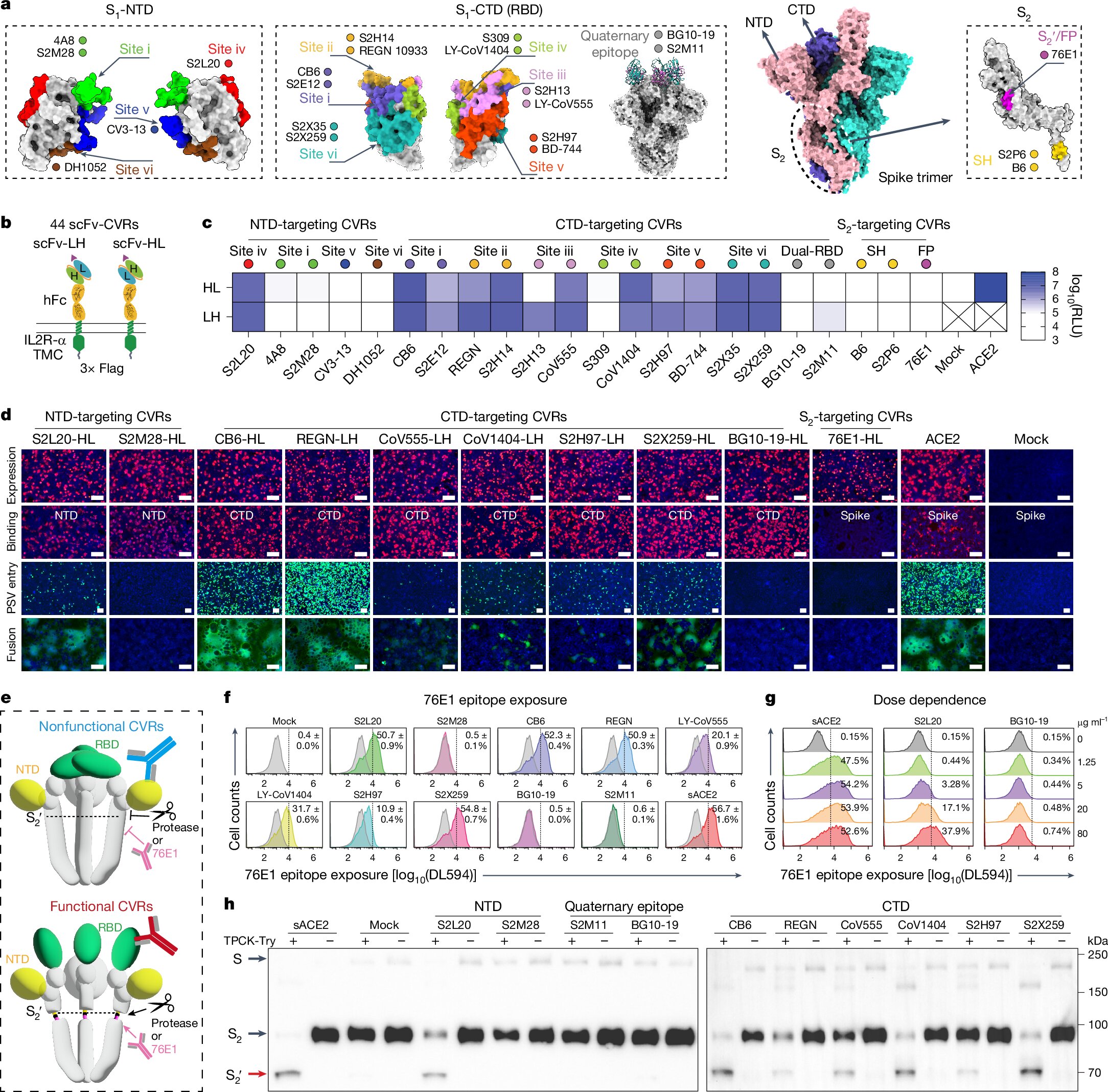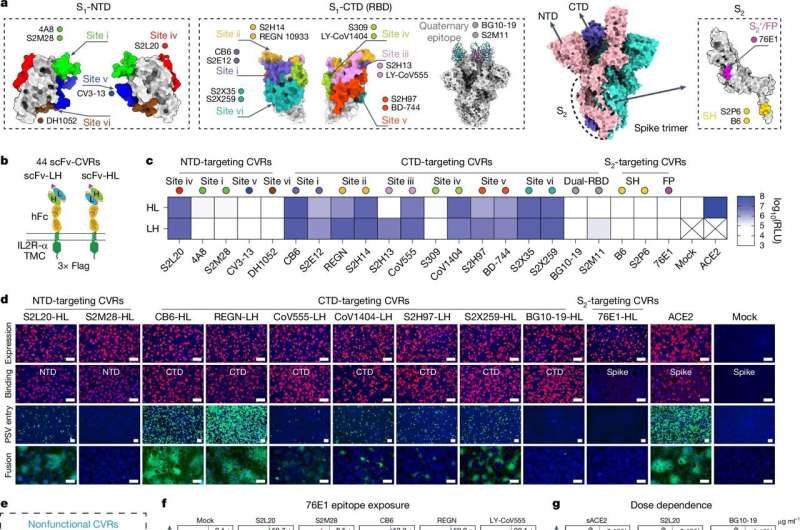

A team of microbiologists and virologists at Wuhan University, working with colleagues from the Chinese Academy of Sciences, the University of Washington and Humabs BioMed SA, has found that it is possible to use coronavirus DNA to create receptors that can be added to the membranes of human or animal cell membranes for research efforts.
In their paper published in the journal Nature, the group describes how they built such receptors from scratch and elucidates possible uses for them.
Prior research has shown that coronavirus infects people by using a spike protein on its surface to bind with a receptor protein on the surface of a host cell. Once binding occurs, the virus can enter the cell through the receptor, leading to infection. Prior research has also shown that in order to protect people in the future from the thousands of coronaviruses that exist in nature, a means must be found to mimic coronaviruses’ behavior.
Unfortunately, finding samples and growing them in labs is not only difficult, but dangerous. Because of that, researchers have taken to collecting samples of coronavirus genomes instead. Such samples can “grow” a spike protein identical to the one that would have grown naturally on the original virus. The problem is finding a human cell with a receptor compatible with the spike protein.
In this new effort, the researchers wondered if it might not be easier to simply create a receptor based on the shape of the spike protein and then fuse it onto the surface of a human cell. The results could then be used for research efforts to combat the original coronavirus should it mutate in ways that allow it to infect humans.
To create the desired receptors, the research team used known coronavirus receptors to build what they describe as scaffolds. These receptors include ACE2, the one most known to be used by the virus responsible for COVID-19. The team then added parts that matched the spike protein’s parts called “virus-binding domains.” Next, they manipulated the results in different ways to find the optimal results.
The team tested their receptors using pseudo-viruses and then moved on to mimicking known receptors, and found that they could very accurately mimic real ones such as ACE2. Over time, they created 12 unique receptors, which the team suggests were as good as the real thing for research purposes.
More information:
Peng Liu et al, Design of customized coronavirus receptors, Nature (2024). DOI: 10.1038/s41586-024-08121-5
© 2024 Science X Network
Citation:
Artificial receptors made from coronavirus DNA open up new avenues for research (2024, November 6)
retrieved 6 November 2024
from https://phys.org/news/2024-11-artificial-receptors-coronavirus-dna-avenues.html
This document is subject to copyright. Apart from any fair dealing for the purpose of private study or research, no
part may be reproduced without the written permission. The content is provided for information purposes only.